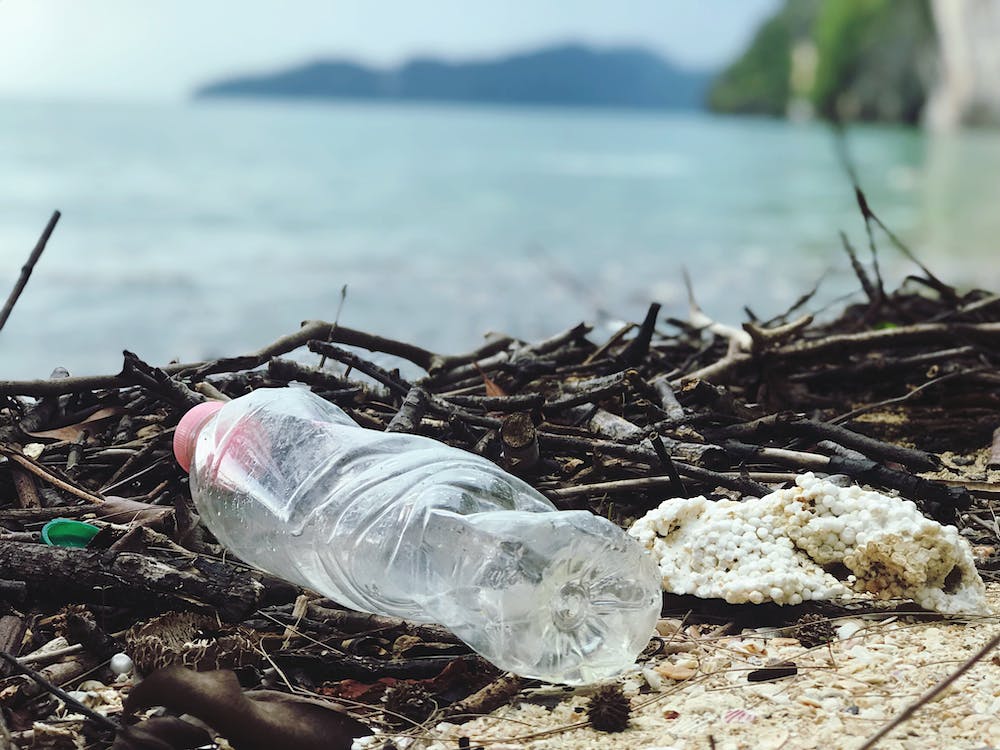An “urgency to this” – microplastics posing human health risks, report warns
by Carey Gillam
Growing plastic pollution not only poses a threat to wildlife and the environment, but increasingly also to human health due to pervasive microscopic plastic particles that people are ingesting through their diet, according to a research report released Monday.
These microplastics appear to be contributing to fertility problems and poor respiratory health, and to induce biological changes that can lead to cancer in the digestive track, according to the findings.
Microplastics – generally defined as particles smaller than 5 mm (5,000 microns) – result from the breakdown of larger plastic products as well as from the manufacture of miniscule plastics used in cosmetics, industrial cleaners and other products. Most first-generation plastics are made from fossil fuels.
Though there is little research on the human health impacts of microplastics, human exposure has been well documented in recent years. Microplastics have been found in stool samples of people around the world as well as in blood samples and in human lungs.
“There is an urgency to this,” said Tracey Woodruff, professor and director of the University of California San Francisco’s Program on Reproductive Health and the Environment (PRHE), which helped lead the review of nearly 2,000 studies that formed the basis for the new report.
“The science around plastics in general is kind of in its early period,” Woodruff said. “We suspect we’re just going to continue to find more problems with these microplastics. It’s not surprising that something that is made up of chemicals that are toxic would be toxic to human health.”
The report, titled “Microplastics Occurrence, Health Effects, and Mitigation Policies: An Evidence Review for the California State Legislature,” was developed at the request of the California Senate Committee on Environmental Quality and the Assembly Committee on Natural Resources.
The work was done through the California State Policy Evidence Consortium (CalSPEC), an initiative that taps various University of California experts to produce reports on topics of concern for the state legislature.
Lack of human studies
The use of plastic products has surged in recent decades, and annual plastic production is forecast to reach 1.1 billion metric tons by 2050, up from at 15 million metric tons in 1964 and at 311 million metric tons in 2014.
An American Chemistry Council report says that plastics are becoming “ubiquitous across almost all facets of the economy,” delivering benefits that include food preservation, life-saving medical devices, and uses in vehicles that reduce carbon dioxide emissions.
The organization states that the half-lives of plastics in the natural environment range from 50 to 1,200 years.
Faced with few human studies on the impacts of microplastics exposure, the California research team that authored the new report relied largely on rodent studies to draw their conclusions. Looking at a broad range of studies, the researchers found that rodents exposed to increased concentrations of microplastics showed increased alterations in key biological functions. Changes in hormones, inflammation, oxidative stress, and decreased male sperm counts were noted, the report states.
The impacts seen on male sperm come after a 2022 meta-analysis found that sperm counts in humans have been plummeting in recent years.
The report included some limited information from biomonitoring studies that found microplastics in various human biological samples, including breast milk and placenta. Several of those studies found a correlation between higher concentrations of microplastics among people with disease compared to healthy people, the report states.
Routes of human microplastic exposure include eating and drinking food and liquids contaminated with microplastics as well as inhalation and dermal contact, including through skin and hair follicles, according to the report.
And, though evidence from respiratory studies did not undergo a rigorous evaluation, findings from five studies on the respiratory system indicated health harms, the report states.
The researchers noted that their review was limited, and warned that their conclusions could be an
“underestimation of the true harm of microplastic exposure.”
The report also examined policies on microplastics and warned that regulatory policy is lacking needed protections for human health, including in California, even though the state has moved to ban microplastic beads in cosmetics and to restrict plastic packaging.
The researchers said more work is needed to better understand the prevalence and distribution of microplastic contaminants, to determine “acceptable levels” of microplastics exposure, and to evaluate prevention and mitigation strategies.


